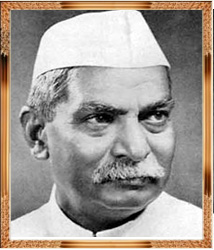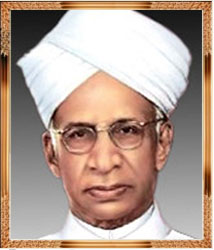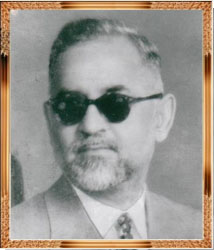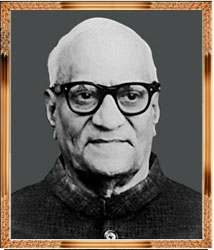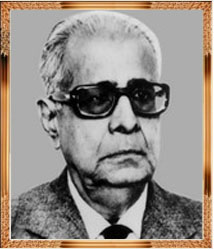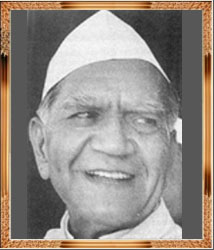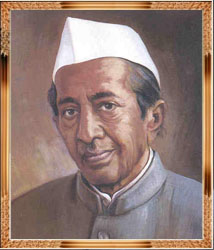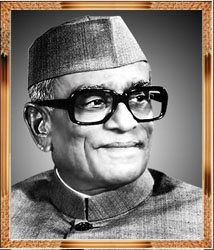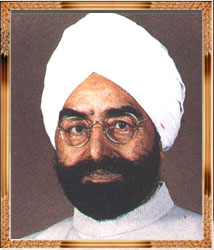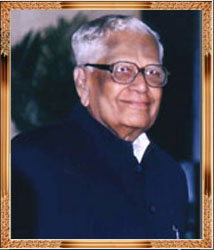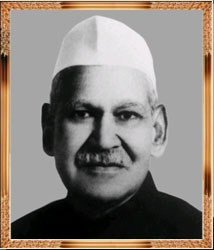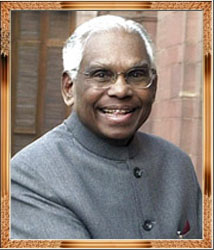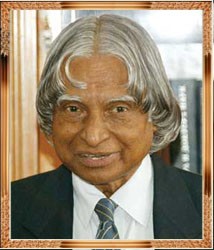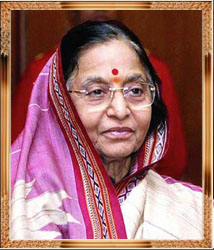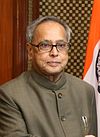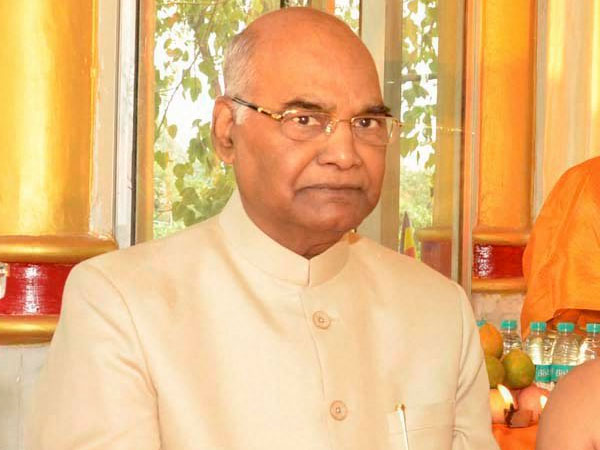PRESIDENTS, VICE PRESIDENTS AND GOVERNORS
Q1. What is a Republic?
A form of government in which the people ( or a majority of them) retain supreme control over the government, with a state head - normally President - who can take decisions only according to established laws.
Q2. When did India become Republic and what is the significance of the date?
26th January 1950. The date, 26th January, was chosen as on this date in 1930 it was decided to observe the date as Independence Day during the freedom struggle movement.
Q3. Which Article of the Constitution provides for the post of President?
Article 52 of Part V.
Q4. When did the post of President come into existence?
26th January 1950. Preceding this date, it was Governor General. After independence, Lord Mountbatten continued as the Governor General till 21.6.1948, then Sir C.Rajagopalachari took over as the first and the only Indian Governor General of India from 21st June 1948 to 26th January 1950.
Q5. Which Article of the Constitution deals with the election of President specifically?
Article 54. Other Articles 51 to 61 deal with other matters related to President.
Q6. In Indian terminology, how the President is called?
RASHTRAPATI - a Sanskrit word meaning "Lord of the Realm".
Q7. Who coined the word "Rashtrapati" from Sanskrit?
T.N. Srikantiah - Kannada Writer when he was a member of the Indian Constitution Council.
Q8. What are the Conditions to become a President?
1. Citizen of India
2. Must be 35 years of age and above.
3. Should not hold any other office of profit.
These are the three main conditions, apart from other social and biological reasons, which normally gets scrutinized when the selection is made. The same conditions apply for Vice Presidents also.
Q9. How the President is elected?
Among the various constitutional posts, President of India is an elected post. The President is elected by an electoral college consisting of :
1. Elected members of both the Houses of Parliament.
2. Elected members of State legislatures.
3. The Election is conducted by secret ballots in accordance with the system of proportional representation by means of a single transferable vote.
Q10. What is the formula adopted in calculating the votes in the election of President?
Each member of a state legislative assembly has as many votes as is determined by the following formula;
Total Population of State (as per the last census)
------------------------------------------------------------------------------
Total Number of elected members of the legislative assembly
divided by 1000.
Fractions exceeding half will be counted as one. For securing parity between the States as a whole and the Union, the votes of each member of Parliament will be according to:
Total number of votes assigned to elected members to the Legislative Assemblies of the States divided by Total number of the elected member of both Houses of Parliaments: Quota:
Total Number of Votes polled
-------------------------------------------------- + 1
Number of Candidates.
If in the first count, no candidate secures the required quota of votes, the votes secured by the last candidate with least votes, are transferred among the other candidates according to the second preference on the ballot papers of the voters who gave him first preferences. The process of transfer of votes is continued till a candidate is elected on the basis of the requisite quota of votes.
Q11. Who is empowered to settle disputes if any in the matter of election of President?
Supreme Courts and its decision is final.
Q12. Who administers the Oath of Office for President?
Chief Justice of India (Under Article 60).
Q13. What is the term of office of President?
5 years.
Q14. Under which Article of the Constitution the President can be removed from Office?
Article 61, by an impeachment motion.
Q15. Who was the first President of India?
Dr. Rajendra Prasad from 26.1.1950 to 13.5.1962.
Q16. Who had the longest tenure as President?
Dr. Rajendra Prasad - 12 years and 3 months.
Q17. Who had the shortest tenure as President?
Dr. Zakir Hussain - 13.5.1967 to 03.5.1969 - 1 year and 355 days.
Q.18. Name the Presidents of India, who were honoured with Bharat Ratna, before becoming President?
1. S. Radadhakrishnan. 2. Zakir Hussain 3. A P J Abdul Kalam.
Q18. What are the main duties of a President?
1. Chief Executive Head of the Union. 2. Supreme Commander of the Armed Forces. 3. Assenting or Dissenting of bills. 4. Appointing persons to various Constitutional posts, Justices, Judges of Supreme Court and High Courts. 5. Only after the President's assent, a bill, becomes the law of the country. 6. Initiating parliamentary proceedings, grant of pardons etc., 7. President alone is empowered to declare emergencies, of course on the recommendation of the PM and his council of ministers.
Q19. Of all the Presidents so far, who was the only one to have officiated as Chief Minister, Lok Sabha Speaker and as President?
Neelam Sanjiva Reddy - He was CM of Andhra Pradesh, Lok Sabha Speaker and then President.
Q20. Who is the only Chief Justice to have officiated as President?
Mohammed Hidayatullah - 20.7.1969 to 24.8.1969 - between the intervening period of election for the President.
Q21. Who was the President when Smt. Indira Gandhi was assassinated (31.10.1984)?
Giani Zail Singh.
Q22. Which is the only occasion in which the second preference votes have been taken into account to decide the President elect?
V.V.Giri in 1969.
Q23. Who was the President when Rajiv Gandhi was assassinated on 21.5.1991?
R.Venkataraman.
Q24. Which state of India has given us more Presidents?
Andhra Pradesh - Three - S.Radhakrishnan, V.V.Giri, Neelam Sanjiva Reddy.
Q25. Which President's birthday is celebrated as Teachers Day in our country?
Dr. S. Radhakrishnan - 5th September.
Q26. Who is the only Finance Minister to become President of India?
R. Venkataraman.
Q27. Which past President of India, died of a road accident ?
Giani Zail Singh - on 25th December 1994.
Q28. Who is that person who refused the offer of becoming the first woman President of India?
Rukmani Devi Arundale, the founder of Kalakshetra in Chennai. She was offered for nomination for the President by Morarji Desai, PM in 1977.
Q29. What is the salary of the President of India (as of 2017)?
1,50,000 rupees per month.
Q30. Retired Presidents get rent free accommodation for how long?
Lifetime.
Q31. What is the number of the nominated aeroplane of President of India?
Air India One.
Q32. How many regular Presidents from the Islamic community were there?
Three -
1. Zakir Hussain 13.5.1967 - 3.5.1969;
2. Fakruddin Ali Ahmed 24.8.1974 - 11.2.1977 and
3. APJ Abdul Kalam 25.7.2002 25.7.2007
Q33. How many Sikh Presidents were there so far?
One. Giani Zail Singh - 25.7.1982 to 25.7.1987.
Q34. Who was the only President from reserved community?
K.R. Narayanan - 25.7.1997 to 25.7.2002 (Kocheri Raman Narayanan).
Q35. Who are the two regular Presidents to die while in Office?
Dr. Zakir Hussain and Fakruddin Ali Ahmed.
Q36. Who was the youngest of all the Presidents so far?
Neelam Sanjiva Reddy. He was 64 years when he became the President.
Q37. Who is the oldest to become the President of India?
R. Venkataraman at the age of 76 years.
Q38. Of the three acting Presidents, who alone became a regular President later?
V.V.Giri (Varaha Giri Venkata Giri).
Q39. Who is the only Scientist and non-political person to become a President?
A.P.J. Abdul Kalam - 25.7.2002 to 25.7.2007 . His full name is Avul Pakir Jainulabdeen Abdul Kalam.
Q40. Who is the only woman President of India?
Smt. Pratibha Patil from 25.7.2007. Preceding this, she was the Governor of Rajasthan. In 1991, she was elected as a Member of Parliament from Amaravati constituency in Maharashtra and before that (1985-90)she was a Member of Parliament of Rajya Sabha. She also served as Member of the Legislative Assembly of Maharashtra representing Muktainagar.
List of Presidents so Far
VICE PRESIDENTS
Q41. Who are the only President and Vice President to continue in office for two terms continuously?
Dr.Rajendra Prasad as President.
Dr.S.Radhakrishnan and Mohammad Hamid Ansari -- as Vice President.
Q42. Which article of the Constitution provides for the post of a Vice President?
Article of the 63 of the Constitution.
Q43. Vice Presidents are elected by?
The elected members of both the Houses of Parliament. State legislatures have no role to play in the election of Vice President.
Q44. Under which Article of the Constitution, the elected vice President becomes the ex-officio Chairman of the Rajya Sabha?
Article 64.
Q45. What is the term of office of the Vice President?
Article 67 - 5 years. Can be removed by resignation, or by removal, by a resolution in the Rajya Sabha passed by both Houses.
Q46. What is the minimum age requirement for becoming a Vice President?
35 years and above and other conditions as for President.
Q47. In case of exigencies, how long a Vice President can act as President?
6 months - within which arrangements have to be made to elect the regular President. Otherwise, it will become a constitutional breakdown.
Q48. Who administers the oath of office for Vice President?
President.
Q49. Who was the first Vice President of India?
Dr.S. Radhakrishnan (S= Sarvepalli)
Q50. Who had the longest stint as Vice President?
Dr.S.Radhakrishnan - 10 years. Then became the second President of India.
Q51. Who had the shortest tenure as Vice President?
V.V.Giri - 2 years - 1967-1969.
Q52. Who are the regular Vice Presidents who became Presidents later?
Dr.S.Radhakrishnan, Dr.Zakir Hussain, V.V.Giri, R. Venkataraman, S.D.Sharma and K.R.Narayanan.
Q53. Who are the regular Vice Presidents who have not become Presidents later?
G.S.Pathak, B.D.Jatti, Muhammad Hidayatullah, Krishan Kanth and Bhairon Singh Shekawat. Of these, B.D.Jatti and Md.Hidayatullah had a brief stint as acting Presidents.
List of Vice-Presidents of India
| NAME |
FROM |
TO |
| Dr.S.Radhakrishnan |
13.5.1952 |
12.5.1962 |
| Zakir Hussain |
13.5.1962 |
12.5.1967 |
| V.V.Giri |
13.5.1967 |
3.5.1969 |
| Gopal Swarup Pathak |
31.8.1969 |
30.8.1974 |
| Basappa Danappa Jatti |
31.8.1974 |
30.8.1979 |
| Mohammed Hidayatullah |
31.8.1979 |
30.8.1984 |
| Ramaswamy Venkataraman |
31.8.1984 |
27.7.1987 |
| Shankar Dayal Sharma |
3.9.1987 |
24.7.1992 |
| Kocheri Raman Narayanan |
21.8.1992 |
24.7.1997 |
| Krishan Kant |
21.8.1997 |
21.7.2002 |
| Bhairon Singh Shekawat |
19.8.2002 |
21.7.2007 |
| Mohammad Ansari |
11.8.2007 |
continues.** |
| |
|
|
| |
|
|
| |
|
|
**Continues for a second term.
GOVERNOR
Q54. Which Article of the Constitution provides for a Governor of a State?
Article 155 - Governor is the executive head of a state, like the President for the country.
A Constitutional post, to be appointed by the President.
The normal tenure of a Governor is 5 years.
Q55. Governor of a state is appointed from and by?
Nominated and appointed by the President from among Politicians, Bureaucrats, Defence Officers, Academicians, and other Citizens with distinguished career.
Q56. What is the minimum age required for a person to become a Governor?
35 years and above (all other conditions similar to President and V.President).
Q57. Who administers the oath of office to the Governor?
Chief Justice of the respective High Courts.
Q58. Who was the youngest to become a Governor of a State?
Swaraj Kaushal - Husband of Sushma Swaraj, the leading politician of the Bharatiya Janata Party. He became a Governor of Mizoram in 1990 at the age of 38.
Q59. Who was the first woman Governor of a state before India becoming a Republic?
Sarojini Naidu,- 15.8.1947 to 2.3.1949 for the United Provinces (now Uttar Pradesh) and she died of heart attack while in office.
Q60. Who was the first woman Governor of a State after India becoming a Republic?
Padmaja Naidu - daughter of Sarojini Naidu and she became the Governor of West Bengal from 3.11.1956 to 1.6.1967.
Q61. Who is the executive head of Union Territories?
Q62. What unique record B.K. Nehru holds in relation to Governor?
He was the first Governor of three states viz Manipur, Meghalaya and Tripura.
LIST OF FIRST GOVERNORS OF STATES OF INDIA (AFTER INDEPENDENCE)
| STATE |
FIRST GOVERNOR |
| Andhra Pradesh |
Chandulal M. Trivedi |
| Arunachal Pradesh |
Bhishma Narain Singh |
| Assam |
Md.Saleh Akbar Hydari |
| Bihar |
Jairamdas Daulat Ram |
| Chhatisgarh |
Dinesh Nandan Sahay |
| Goa |
Maj.Gen.K.P.Candeth |
| Gujarat |
Mehdi Nawaz Jung |
| Haryana |
Dharma Vira |
| Himachal Pradesh |
S.Chakravathi |
| Jammu & Kashmir |
Dr.Karan Singh |
| Jharkhand |
Prabhat Kumar |
| Karnataka |
Jayachamaraja Wodeyar |
| Kerala |
B.Ramakrishna Rao |
| Madhya Pradesh |
Dr.Pattabhi Seetharamaiah |
| Maharashtra |
Sri Prakasa |
| Manipur |
B.K.Nehru |
| Meghalaya |
B.K.Nehru |
| Mizoram |
Hiteshwar Saikia |
| Nagaland |
Vishnu Sahay |
| Orissa (Odisha) |
Dr. Kailashnath Katju |
| Punjab |
Chandulah Madhavlal Trivedi |
| Rajasthan |
Gurmukh Nihal Singh |
| Sikkim |
B.B.Lal |
| Tamilnadu |
Sir Archibald Edward Nye |
| Tripura |
B.K.Nehru |
| Uttarakhand |
Surjit singh Barnala |
| Uttar Pradesh |
Sarojini Naidu |
| West Bengal |
C.Rajagopalachari |
| Telengana |
E.S.L.Narasimhan |
| |
|
| |
|
| |
|
UNION TERRITORIES (Present Administrators)
| Andaman & Nicobar |
Prof. Jagdish Mukhi |
| Delhi |
Anil Baijal |
| Puducherry |
Kiran Bedi |
| Chandigarh |
V.P.Singh Badnore |
| Daman & Diu |
Praful Khoda Patel |
| Dadra & Nagar Havel |
Praful Khoda Patel |
| Lakshadweep |
Farooq Khan |
